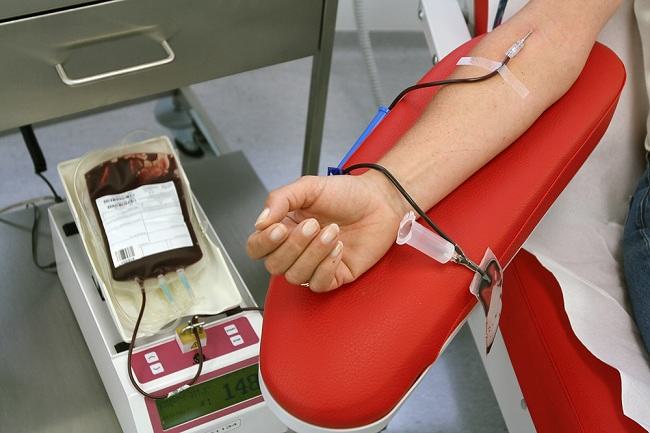Atelectasis is a lung disease wherealveolus not filled by air. Atelectasis is one of the causes lungs collapse or deflated and can't inflate.
Alveoli are where the exchange of oxygen and carbon dioxide takes place. For this exchange to take place properly, the alveoli must be filled with air. In atelectasis, the alveoli are not filled with air. As a result, there is no exchange of oxygen and carbon dioxide.

Causes of Atelectasis
Atelectasis is often caused by a blockage in the form of a tumor, foreign body, mucus in the respiratory tract. The blockage or obstruction can occur in the trachea, bronchi, or bronchioles.
In addition to the blockage of the respiratory tract, atelectasis can also be caused by the following conditions:
- Pneumothorax, which is the collection of air in the pleural cavity
- Pleural effusion, which is a buildup of fluid in the pleural lining
- Injuries to lung tissue, either as a result of injury, complications of lung disease, or side effects of lung surgery
- Injury to the chest that causes severe pain when breathing
- Lung infection or pneumonia
- Chest tumor pressing on the lung or lung cancer
Atelectasis can also occur due to a lack of surfactant in the alveolar walls. Surfactants are substances that function to keep the alveoli from expanding. Lack of surfactant will cause the alveoli to collapse and not expand again. Lack of surfactant is common in babies born prematurely.
In addition to some of the causes above, there are several factors that can increase a person's risk of experiencing atelectasis, including:
- old age
- Recently had surgery on the chest or abdomen
- Just had surgery using general anesthesia
- Taking certain medications that affect the respiratory system
- Have a smoking habit
- Have a respiratory disease, such as chronic obstructive pulmonary disease, asthma, bronchiectasis, or cystic fibrosis
- Have an injury that causes pain and difficulty taking deep breaths, including broken ribs
Symptoms of Atelectasis
At first, atelectasis does not cause any symptoms. Atelectasis will only cause symptoms if the damaged part of the lung is large enough and the body begins to experience a lack of oxygen. Symptoms of atelectasis that will arise are:
- Difficulty breathing
- Right or left chest pain, especially when breathing in and coughing
- Quick breath
- Increased heart rate (tachycardia)
- Blueness of the skin, lips, fingertips (cyanosis)
- Low blood pressure (hypotension)
If the damaged part of the lung is getting wider, atelectasis can also trigger shock.
When to go to the doctor
Go to the ER immediately if you experience the above symptoms. Early treatment will prevent complications and more severe lung damage.
If you have a condition that increases your risk of developing atelectasis, such as having recently had surgery under general anesthesia, having asthma, cystic fibrosis, or broken ribs, do an examination to the doctor and control according to the schedule given by the doctor.
Atelectasis Diagnosis
The doctor will ask the patient's complaints and symptoms. After that, the doctor will perform a thorax or chest examination. To confirm the diagnosis, the doctor will perform the following investigations:
- Scans, to determine the condition of the lungs. Scanning can be done by X-ray or CT scan of the chest
- Bronchoscopy, to see the condition of the lungs, take tissue samples, or treat blockages in the airways
- Tissue examination (biopsy), to detect abnormalities in lung tissue, including to detect tumors, cancer, or infections
Atelectasis Treatment
Mild atelectasis can resolve on its own without treatment. If the atelectasis is caused by a certain disease or condition, then treatment is done to treat the cause.
Chest Physiotherapy
If the atelectasis is caused by complications after surgery, the doctor will recommend physiotherapy to the patient to help the lungs expand and deflate normally.
The therapies provided include:
- Teach patients the correct cough technique, to help expel mucus from the respiratory tract
- Teach patients deep breathing techniques, with the aid of an incentive spirometry device
- Perform tapping or percussion therapy on the chest wall, either by hand or by air-pulse vibrator
- Position the head lower than the body to help remove mucus
Operation
If atelectasis is caused by mucus plugging in the airways, treatment can be done by suctioning the mucous fluid with a tube suction. This can be done with the help of a bronchoscope.
If the atelectasis is caused by a tumor or cancer, the doctor will perform surgery to remove the tissue. This surgery can be combined with chemotherapy and radiotherapy.
Drugs
To help treat and cure atelectasis, your doctor may give you the following medications:
- BronchodilatorsThis drug serves to widen the bronchi and encourage the release of mucus trapped in the respiratory tract. Examples of bronchodilator drugs that can be used are salmeterol or theophylline.
- AntibioticsAntibiotics can be given to treat atelectasis caused by a bacterial infection. Antibiotics that can be given generally have a broad spectrum, such as cefuroxime and cefaclor.
- MucolyticMucolytic drugs work to thin the mucus in the respiratory tract so that it is easier to expel. Examples of mucolytic drugs that can be given are N-acetylcysteine and dornase alpha.
Complications of Atelectasis
Untreated atelectasis can lead to complications such as:
- Hypoxemia, which is a condition of low oxygen levels in the blood
- Pneumonia or wet lungs, which is inflammation caused by infection in the lungs
- Bronchiectasis, which is a lung disease caused by permanent damage, thickening, and widening of the bronchial tubes
- Respiratory failure, which is a condition when the respiratory system is unable to carry out the functions of delivering oxygen and removing carbon dioxide
Prevention of Atelectasis
Atelectasis can be prevented by avoiding factors that can increase the risk. Steps that can be taken include:
- Stop smoking habit
- Paying attention to the safety of the children's play area, including keeping objects that are at risk of entering the child's respiratory tract
- Have regular consultations with your doctor if you have conditions that increase your risk of atelectasis
- Doing physiotherapy after undergoing a surgical procedure on the chest or undergoing surgery under general anesthesia









